Genetics Midterm 1
1/125
Earn XP
Description and Tags
Lecture 1-6
Name | Mastery | Learn | Test | Matching | Spaced |
|---|
No study sessions yet.
126 Terms
P generation
parental generation
F1
First filial generation. Offspring of P generation
F2
second filial generation. Offspring of F1 generation
genes
units of inheritance
Alleles
alternative forms of a single gene
monohybrids
individuals with 2 different alleles for a single trait
Mendel’s Law of Segregation
The two alleles for a gene separate during gamete formation, then unite at random, one from each parent, at fertilization, so that each gamete carries only one allele.
genotype
The description of the alleles of a gene that an individual carries. Ex: YY
phenotype
the physical and observable traits expressed by an individual, determined by the genotype and environmental factors. The expression of a trait (appearance). Ex: yellow
homozygous
having 2 identical alleles for a gene (yy or YY). homozygous individual is a homozygote.
heterozygous
having 2 different alleles for a gene (Yy). heterozygous individual is a heterozygote.
testcross
Crossing an unknown individual with a homozygous recessive individual to determine the genotype of the unknown. This method helps identify whether the unknown trait is homozygous or heterozygous.
dihybrid cross
Crosses that examine two traits at a time, resulting in a 9:3:3:1 phenotypic ratio in the offspring. This type of genetic cross involves individuals that are heterozygous for two genes being studied.
The Law of Independent Assortment
during gamete formation, alleles of different genes segregate independently of each other, leading to genetic variation in offspring.
difference between the law of independent assortment and the law of segregation
the Law of Segregation deals with the separation of alleles for a single trait, whereas the Law of Independent Assortment pertains to the independent inheritance of multiple traits.
Linked genes
Genes that are on the same chromosome and close enough on the chromosome that they do not assort independently, but dependently. (law of independent assortment does not apply).
Multihybrid Crosses
Crosses that involve multiple traits, each with two or more alleles, to assess inheritance patterns. To calculate the possible # of gamete genotypes from a hybrid, raise 2 to the power of the # of different traits.
polygenic traits
Traits that are determined by multiple genes, resulting in a continuous range of phenotypes. Don’t show simple Mendelian inheritance patterns.
monogenic traits
Traits that are determined by a single gene, resulting in distinct phenotypes that typically follow Mendelian inheritance patterns, but can be challenging.
wild type
the standard or “normal” version of a trait. Usually indicated by a ^+. (most common)
mutant alleles
alleles that differ from the wild type and result in a phenotype that is often less common in the population, potentially leading to dysfunction or abnormal traits. Usually indicated by lower case. (rare allele)
monogenic trait
a trait determined by the effect of a single gene or allele, following classic Mendelian inheritance patterns. These traits are often associated with specific, predictable inheritance patterns and can be related to genetic disorders like cystic fibrosis or sickle cell disease
recognizing dominant traits in pedigrees
affected offspring always have at least one affected parent. 2. dom. traits show in a vertical pattern of inheritance — trait appears in every generation. 3. if two affected parents are both heterozygotes, they can produce unaffected offspring. 4. if one parent is a homozygote, all offspring will be affected.
recognizing recessive traits in pedigrees
affected offspring can have two unaffected parents. 2. all children of two affected parents should be affected. 3. recessive traits show a horizontal pattern of inheritance, with the trait appearing in more than one individual in a generation even though it wasn’t seen in previous gens. 4. may show vertical pattern of inheritance if the trait (allele) is very common in the population.
polygenic traits
multiple genes determine many traits
pleiotropy
a single gene influences multiple phenotypic traits. (ex: agouti gene in mice).
The types of dominant relationships between alleles of the same gene
dominance/recessivity, incomplete dominance, and co-dominance
dominance/recessivity
heterozygote has a phenotype identical to homozygous dominant individuals
incomplete dominance
heterozygote has a phenotype that is a blend between two homozygotes. (in between)
co-dominance
heterozygote has both of the phenotypes exhibited by the two homozygotes. (shows both characteristics) (ex: AB blood type)
monohybrid cross
a breeding experiment that focuses on the inheritance of a single trait, where parents differ in only that one characteristic. Produces a 1:2:1 ratio.
allele frequency
the percentage of the total number of gene copies for one allele in a population
monomorphic gene
a gene with only one wild-type allele
polymorphic
a gene with more than one common allele
2:1 ratio
indicative of a recessive lethal allele
recessive lethal allele
when present in homozygous form (two copies), leads to the death of an organism
multifactorial inheritance
where phenotypes that are related involve 2 or more genes. For many traits, two or more genes interact to determine the phenotype
multifactorial inheritance: types of interactions between genes
novel phenotypes, complementary gene action, and epistasis
novel phenotypes
produced when there are two or more genes. suggests two independently-assorting genes are interacting to determine the one trait/phenotype of something. (ex: crossing grey and tan lentils and producing all brown lentils)
complementary gene action
two genes complement each other to determine a specific trait through a biochemical pathway. Ex: flower color —> crossing 2 white flowers and producing purple flowers. 9:7 ratio.
epistasis
an allele of one gene masks the effects of the alleles of another gene. ex: “e” allele in labs to determine coat color
heterogenous traits
mutations in different genes cause the same phenotype. ex: deafness can be caused by mutations in each of approximately 50 different genes.
test of complementation
used to determine whether two mutations that cause the same phenotype are mutations in the same gene or in different genes. Can only be used for recessive mutations, not dominant.
chromosomes
carriers of genetic material. composed of chromatin
sister chromatids are ____
identical
chromatin
DNA + protein
centromere
complex with proteins of DNA
metacentric
centromere near the middle
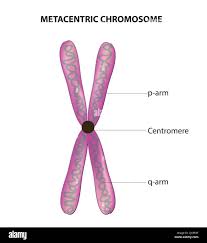
acrocentric
centromere toward one end
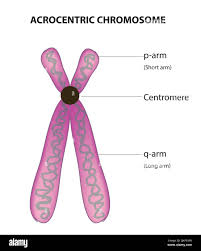
non-homologous chromosomes
unmatched chromosomes
sister chromatids
Sister chromatids are two identical copies of a chromosome (same DNA sequence in the same order) that are joined together at the centromere. They are created during DNA replication and ensure accurate distribution of genetic material during cell division.
homologous chromosomes
not identical, but carry the same genes. (matched chromosomes). may have different alleles for some or many genes.
diploid cells
most body cells. (2n). each chromosomes is one of a homologous pair. each pair of homologues is composed of one maternal copy and one paternal copy. Homo sapiens: 2n = 46.
homologous nonsister chromatids
two chromatids of a pair of homologous chromosomes (one maternal, one paternal) that are not genetically identical. They carry the same genes.
among the 2 homologues of a chromosomes (diploid), one is the _____, and one is the _____.
paternal homologue, maternal homologue
how are chromosomes numbered?
by size. (largest = 1, smallest = 22). Then XX or XY.
how many chromosomes do humans have?
23 pairs of chromosomes. 22 pairs are autosomes, 1 pair of sex chromosomes.
haploid cells
gametes, produced in meiosis, are usually haploid (n). only one copy of each chromosome. males produce gametes that either have an X or Y chromosome.
fertilization in animals
haploid (n) male gametes (sperm) fuse with haploid (n) female gametes (ova) to produce a diploid (2n) zygote form which will develop into an individual.
human sex chromosomes
X and Y share about 30 genes (PAR 1 and PAR 2 regions)
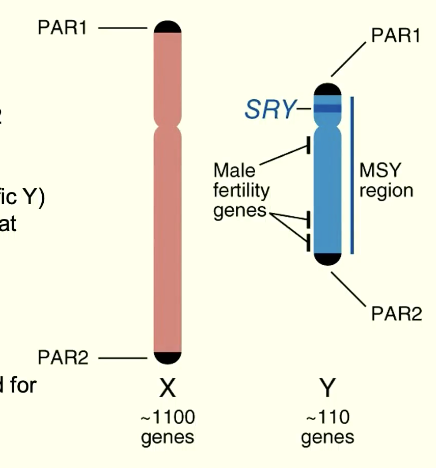
male sex chromosome, MSY region
male-specific Y. has at least 78 unique genes, such as the SRY gene and other genes needed for sperm production.
SRY gene
key gene determining maleness.
the cell cycle
cells undergoing active growth and division
phases of the cell cycle
G1 > S > G2 > M
G1
Gap 1. a newly produced cell starts here. Here is cell growth and preparation for DNA synthesis. chromosomes are each composed of one chromatid.
S
Synthesis. Chromosome duplication (DNA and associated proteins are replicated). chromosomes duplicate; DNA replicates.
G2
Gap 2. Cell growth and preparation for mitosis. as a result of S phase, each chromosome is composed of 2 sister chromatids.
M
Mitosis and Cytokinesis. Nuclear division and segregation of chromatids, cell division.
G0
Cells in this phase are not actively growing or dividing. chromosomes are each composed of one chromatid.
mitosis overview
sister chromatids of each chromosome detach and segregate, moving to opposite poles of the cell
steps of mitosis
prophase > prometaphase > metaphase > anaphase > telophase > cytokinesis
cytokinesis
cytoplasm of the cell is divided and two daughter cells are produced, each with one nucleus.
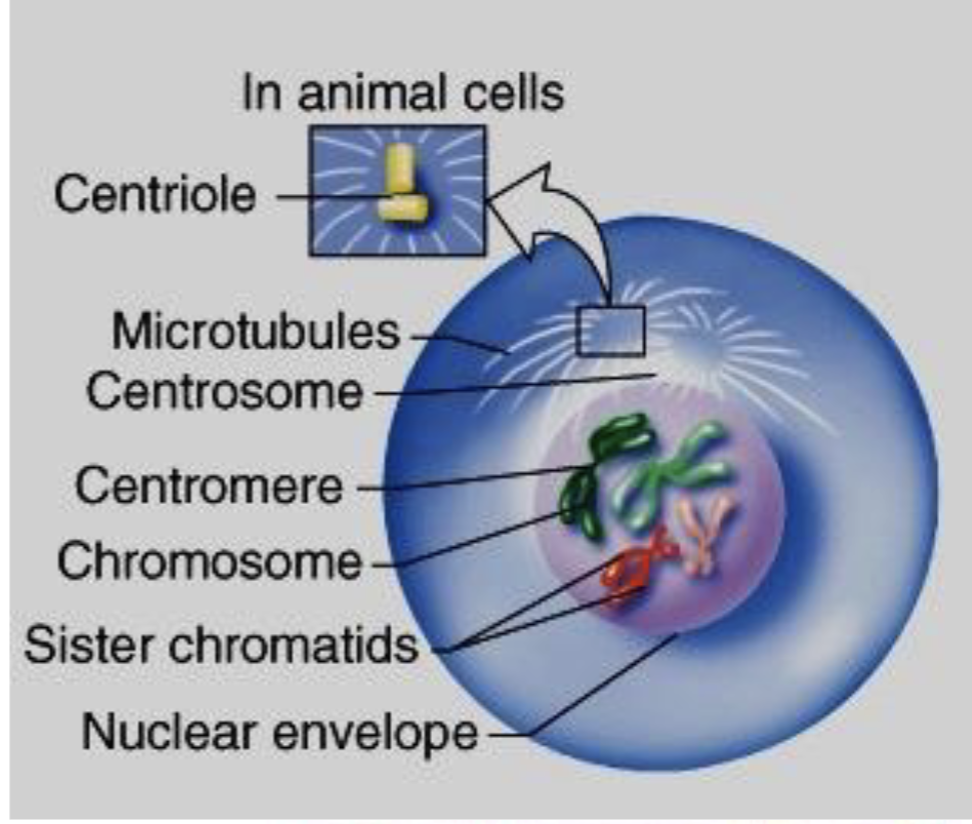
which phase in mitosis?
prophase
prophase
chromosome condense dramatically; sister chromatids of each chromosome are attached at their centromere. centrosomes, which are replicated during interphase, move apart toward opposite sides of the nucleus. nucleoli begin to disappear.
centrosomes
composed of a complex of proteins. 1 at the beginning of mitosis that replicates to make 2 centrosomes. the middle of centrosomes have a centriole, which is a complex of proteins.
nucleoli
sites of ribosome production
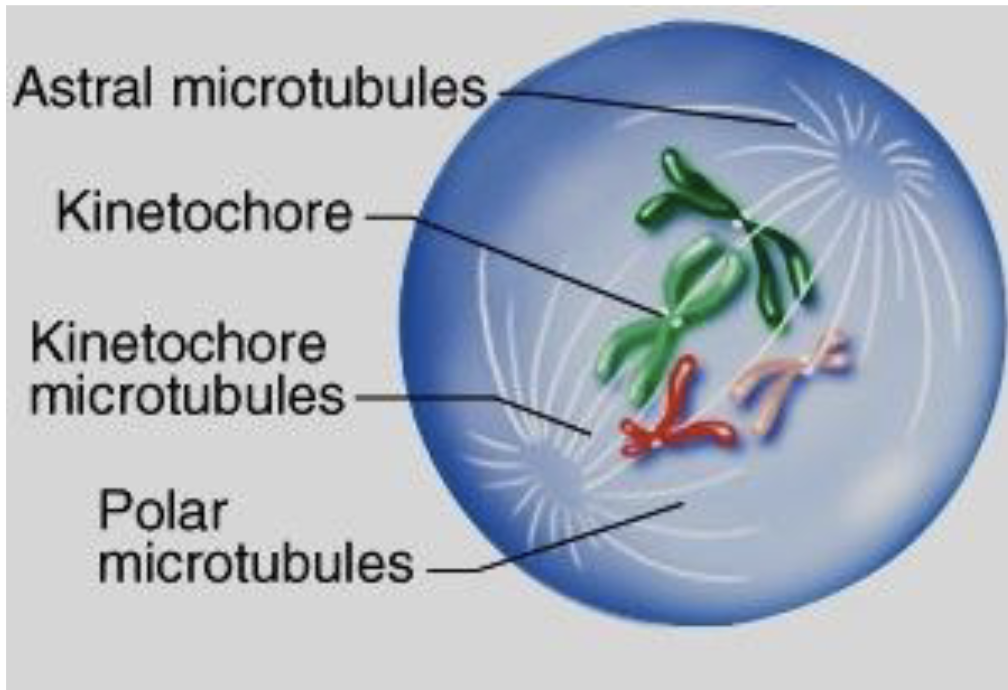
which phase in mitosis?
prometaphase
prometaphase
nuclear envelope (membrane) breaks down. kinetochore microtubules from centrosomes invade nucleus and attach to kinetochores in centromeres. sister chromatids are attached to kinetochore microtubules from centrosomes at opposite poles. astral microtubules and polar microtubules radiate out of centrosomes. complex of microtubules from centrosome forms the mitotic spindle.
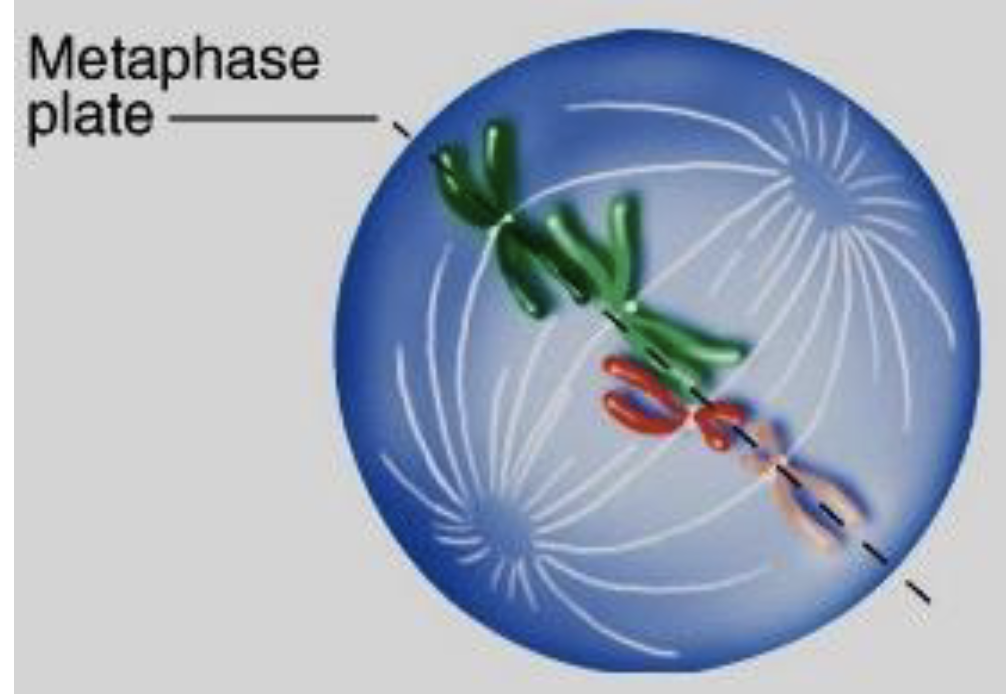
which phase in mitosis?
metaphase
metaphase
chromosomes align on “metaphase plate” at the equator of the cell. sister chromatids of each attached by their kinetochore to opposite poles of the mitotic spindle.
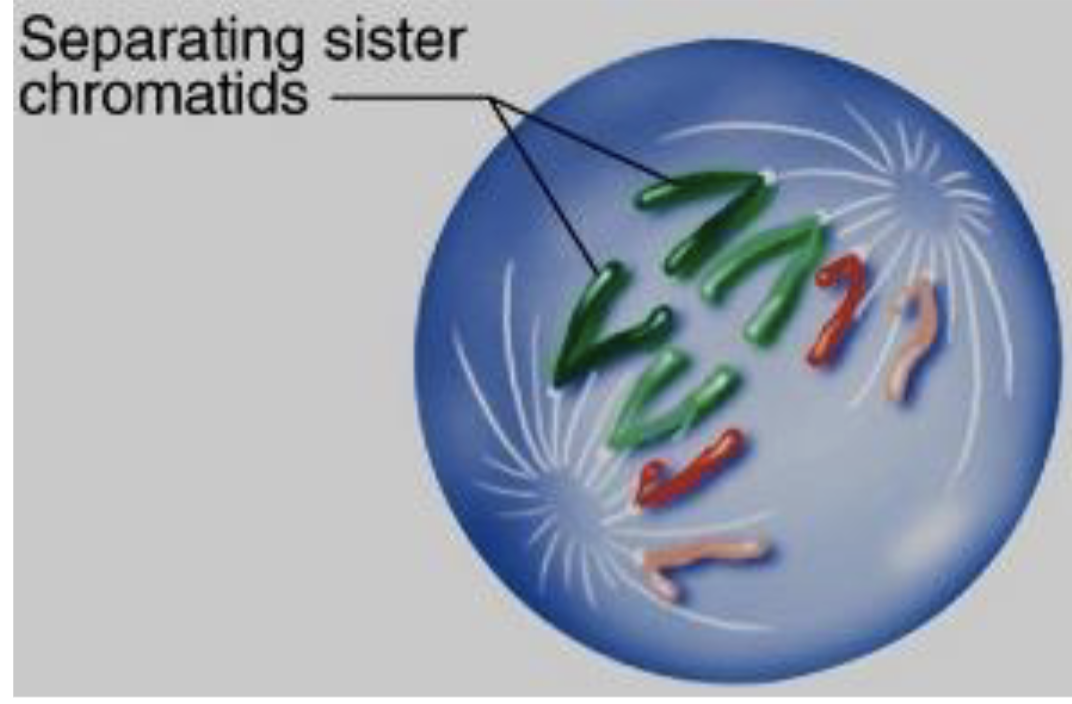
which phase in mitosis?
anaphase
anaphase
centromeric connections between sister chromatids are severed. kinetochore microtubules shorten and pull each chromatid toward the spindle pole to which it is attached. sister chromatids segregate. genetic info moving to each pole is identical since each pole is pulling in one sister chromatid from each chromsome.
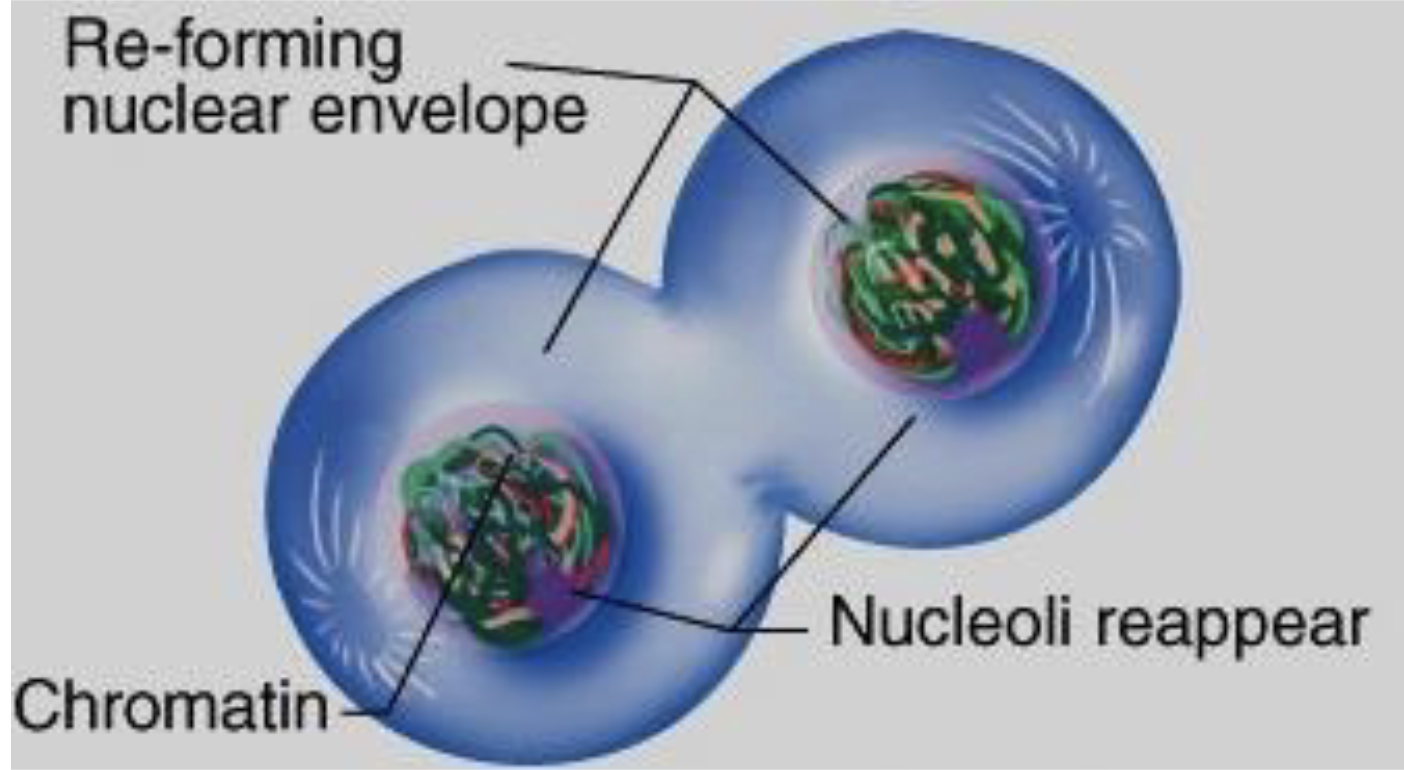
which phase in mitosis?
telophase
telophase
each chromatid is now a chromosome. chromosomes uncoil and decondense. a nuclear envelope forms around each set of chromosomes. nucleoli reappear. spindle microtubules disperse.
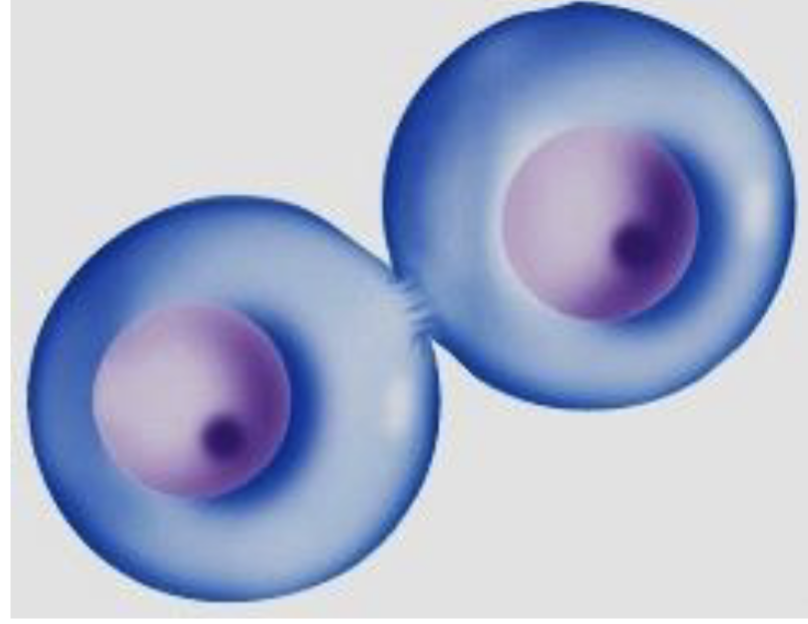
which phase?
cytokinesis
cytokinesis
initiated during anaphase. completed after telophase. cytoplasm is divided between two daughter cells. organelles are distributed more or less evenly between daughter cells. results in two daughter cells with identical genetic info. separate of mitosis; mitosis can occur without this phase.
cell cycle regulation, major checkpoints
G1, S, and G2. makes sure cells are dividing properly and ensures conditions are good before starting the next phase in cell cycle.
G1 to S
makes sure cell is proper size. have proper signals been received? if no, cell goes to G0. if yes, cell will duplicate chromosomes and centrosomes.
G2 to M
have chromosomes been completely duplicated? if yes, cell enters mitosis.
metaphase to anaphase
have all chromosomes arrived and aligned at the metaphase plate? if yes, anaphase initiated.
somatic cells
most cells in the body. are either in G0 or going through regular cell cycle, including mitosis. mutations that occur here are not passed to the next generation (somatic mutations).
germ cells
precursors to gametes. usually set apart from somatic cells during embryonic development, and become incorporated into reproductive organs. goes through meiosis to produce haploid gametes. mutations that occur here can be passed to the next generation (germline mutations).
overview of meiosis
chromosomes of diploid precursor cells are duplicated prior to meiosis. two chromatids per chromosome at the start of meiosis. two rounds of cell/nuclear division. meiosis 1: homologous chromosomes segregate into separate daughter cells. sister chromatids stay together and creates 2 haploid cells. meiosis 2: sister chromatids of each chromosome segregate into separate daughter cells. creates 4 haploid daughter cells; each chromosome is just one chromatid.
phases of Meiosis I
prophase I, metaphase I, anaphase I, telophase I, and interkinesis
prophase I
chromosomes shorten, homologs pair, crossing over occurs, chromatids fully condense. subdivided into 5 subphases: leptotene, zygotene, pachytene, diplotene, and diakinesis.

which phase in meiosis?
prophase I
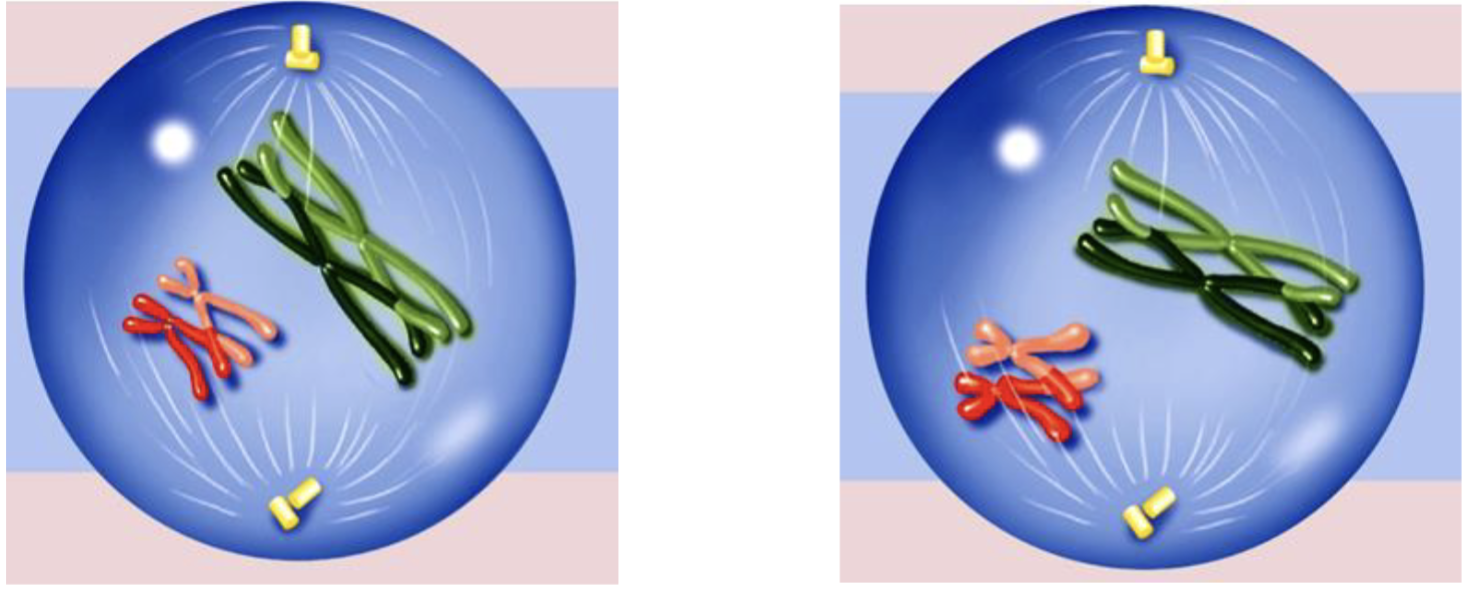
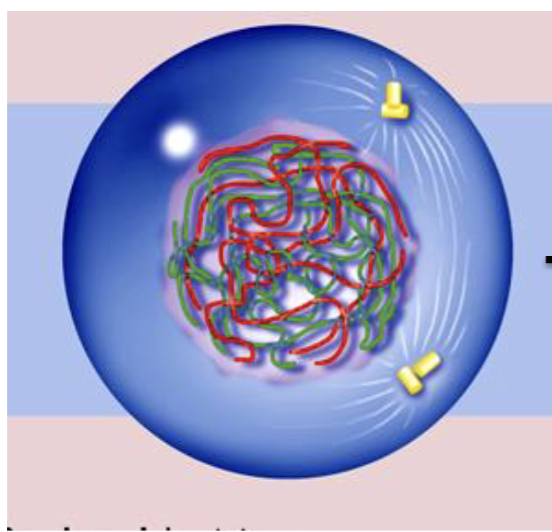
which subphase in prophase I?
leptotene
leptotene
1st subphase in prophase I. chromosomes begin to condense. centrosomes begin to move to opposite sides of nucleus.
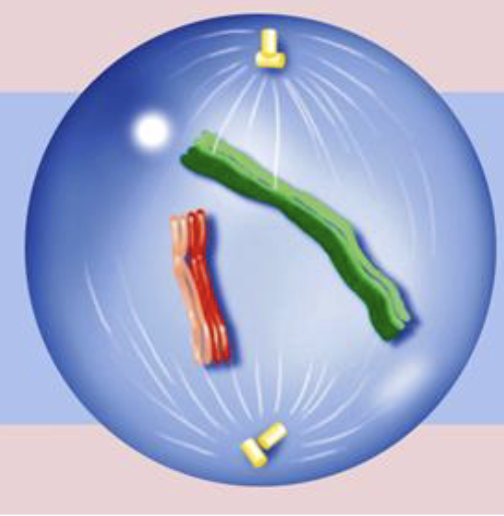
which subphase in prophase I?
zygotene
zygotene
2nd subphase in prophase I. chromosomes enter synapsis: homologues pair (line up next to each other). synaptonemal complex forms.